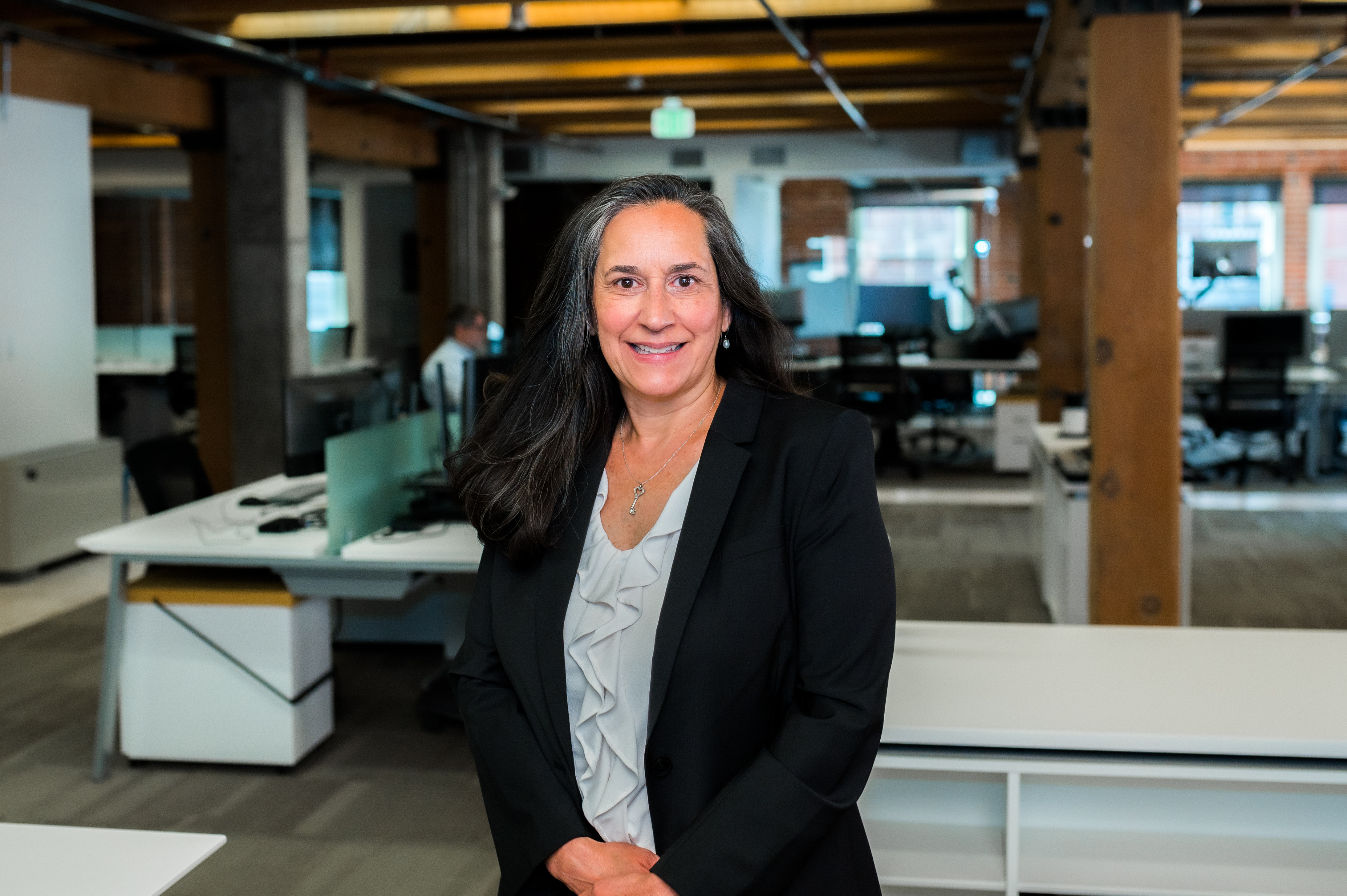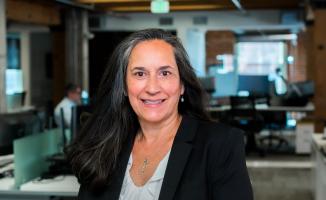A Conversation With Lynn Orosco, Cuningham’s First Dedicated EDI Strategist

Cuningham welcomes Lynn Orosco (she, her, they) as the firm’s first dedicated Equity, Diversity & Inclusion (EDI) Strategist. As we continue making long-term investments in diversity, equity, and inclusion, we will leverage Lynn’s expertise to create a transformative workplace where EDI efforts not only strengthen firm culture but increase the value we bring our clients and industry partners.
Prior to joining Cuningham, Lynn was a EDI Lead for a women-owned EDI consulting firm in Washington D.C. A first-generation high school and college graduate, Lynn has a rich background in EDI, change management, and organizational and leadership development in a variety of industries, including the healthcare and financial sectors.
Lynn is also Chicana and Pueblo Indian (Taos) and currently lives on the traditional lands of the Cheyenne & Ute Tribes outside Denver. Lynn enjoys spending free time volunteering as a raptor monitor for Colorado Parks & Wildlife, learning how to weave on a heddle loom, hiking, and enjoying the outdoors.
We recently sat down with Lynn to learn more about her approach to EDI strategies and discuss how organizations can create meaningful change.
Q: Cuningham is so thrilled to have you in this critical strategic role for our organization. To start, can you share what is your defining approach to EDI?
Lynn: You might laugh, but I have a model for everything. When assessing an organization like Cuningham, I use these models to gain a holistic understanding of every aspect of the firm.
From marketing and communications to the recruitment of talent, my model (which is not my singular model, but an industry-agnostic model created by over one hundred EDI practitioners, globally) considers 15 different areas to give me a big picture of where we currently stand. From there, I work with diverse stakeholders within the firm to create a unique strategy adapted for Cuningham’s specific needs. I figure out where we are on our journey and how we can continue to grow.
What my approach isn’t, is reactive. Too often organizations just see what is going on in the world around them and scramble to adapt. For example, in 2020 many companies saw the social justice issues going on in the world and were pressured to hire EDI strategists without providing the needed resources or budgets to make a real impact on the cultures. As a result, we are now seeing these “strategic” hires being laid off because change hasn’t happened quick enough or because these social issues are less of a priority.
Also central to my personal ethos is how I define “diversity.” Diversity is not just race and ethnicity, like many in the corporate would assume. When I talk about diversity, I’m considering everything from gender identity, sexual orientation, age, parental status, socioeconomic background, etc. Even experiences as a result of geography and education need to be considered. The lens we use should encompass as many dimensions of diversity as possible.

EDI can mean a lot of different things to different people. How do you capture the wide variety of sentiments that may exist within an organization like Cuningham?
Everybody has a different relationship to EDI based on their lived experiences and role within an organization. What EDI means to someone on the HR team probably differs from what it means to a designer accepting their first job out of college. I use the framework to the left, which is organized into five approaches to equity, diversity, inclusion, to help me understand, quantify, and act on this spectrum of understandings.
When I ask people in the firm “what is your personal approach to equity, diversity, and inclusion,” having these five categories in mind helps me better understand and quantify what our team members want and need from our EDI work.
There’s a lot of talk within EDI about metrics—do the numbers always tell the full story?
Metrics are an important part of any EDI strategy, but they must focus on the right measurements.
Often, organizations will measure diversity purely by race and ethnicity. There’s a tendency to get caught up in box checking. But that doesn’t tell the whole story. So what are better outcomes for us to measure? Important metrics measure things like the recruiting and interview process.
For example, what does the data tell us about how we engage minority candidates? Do we create experiences that feel inclusive and equitable no matter someone’s socio-economic background? At what point in the recruiting process are we perhaps losing some of our minority candidates? Who are our job posts reaching in the first place?
These are the areas where metrics are most valuable. These are the measurements that will truly help us create a more diverse workforce.
What is one mistake that companies commonly make around EDI efforts?
I find that EDI efforts in most organizations begin as grassroot efforts by passionate employee groups. This is great! Unfortunately, companies try to capitalize on this energy by putting these invested employees in charge without giving them any real resources or access to senior leadership. If you don’t give your employees the right tools, they won’t be able to make real change. In turn, they will become less engaged, and this grassroots energy will quickly dissipate.
Another mistake I see is not viewing EDI initiatives as long-term investments. These issues are not overnight fixes. It takes years for organizations to make real, cultural shifts—not weeks or months. Don’t get discouraged if the demographic make-up of your firm is unchanged after a few months. If you do the hard work necessary to change your culture, the measurables will follow in time.

Conversely, what is one thing that healthy organizations do?
Organizations with healthy, lived EDI missions have tied the foundation of their work to a firm-wide vision and strategy. This way, leadership is held accountable for the successes and failures of its EDI goals. If this structure is in place, it’s a lot harder for those at the top to simply play lip service. Having a physical structure within the organization—say a EDI council or a EDI Strategist—helps clarify the accountabilities and responsibilities for everyone.
Cuningham’s design practice centers around social and environmental wellbeing. Can you speak to the intersection of EDI/social justice and environmental design?
What actually attracted me to Cuningham as a EDI professional was the firm’s focus on the intersection of social and human sustainability. Organizations outside of the AEC industry make efforts around sustainability, but Cuningham has the ability to directly impact the design and function of its communities. And because this is something Cunningham is already doing, I’m excited by the opportunity to integrate my work with this greater, regenerative mission.
In fact, the model I use for organization assessments actually aligns with the UN’s 2030 Agenda for Sustainable Development. Social and environmental justice are inextricably linked. As a signatory of the Architecture 2030 Challenge, Cuningham is already deeply committed to transforming the built environment from major greenhouse gas contributor to the central solution to the climate crisis. I’m excited to elevate the intersectional nature of these commitments.
To learn more about how Cuningham is making long-term investments in diversity, equity, and inclusion to create a transformative workplace, connect with Lynn below.
